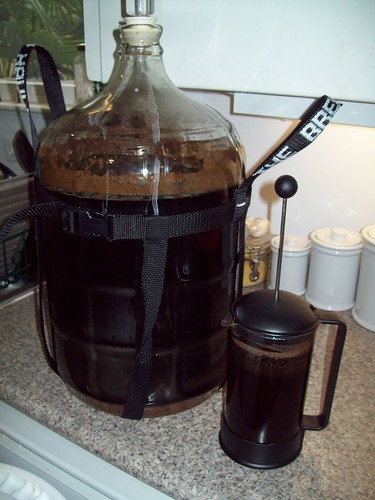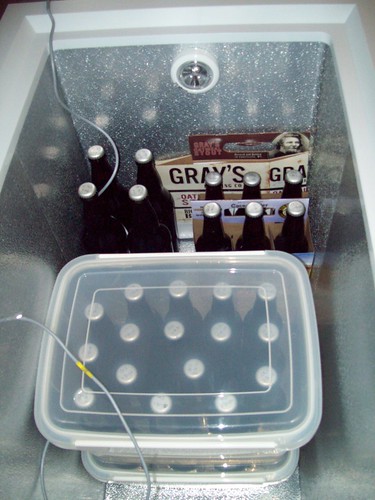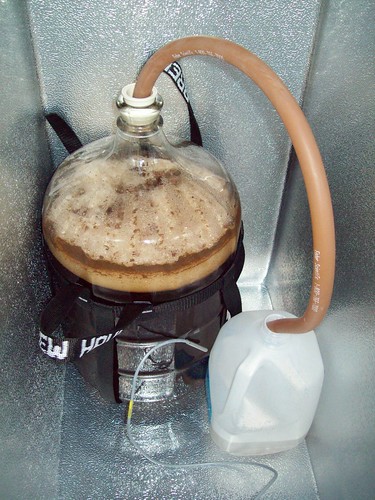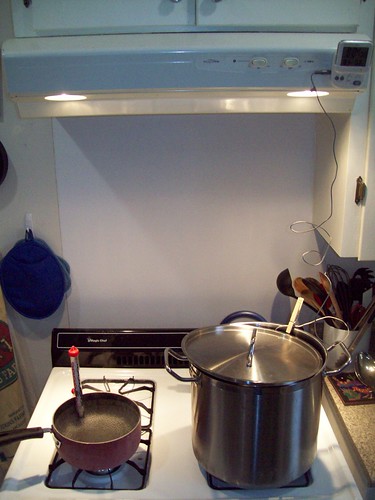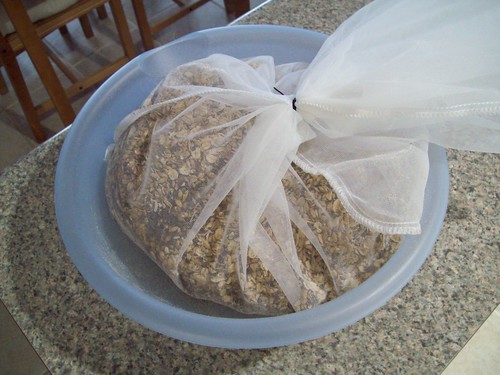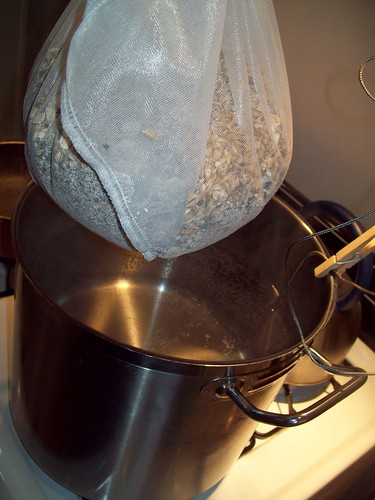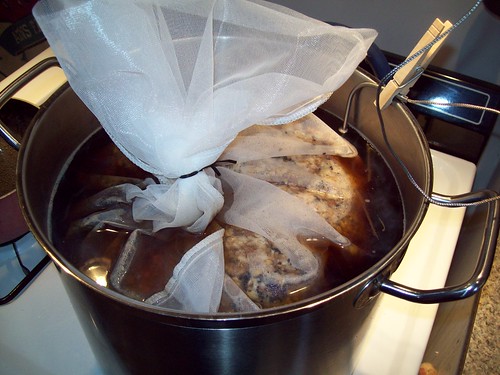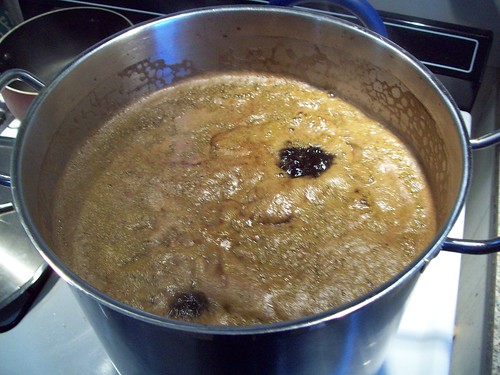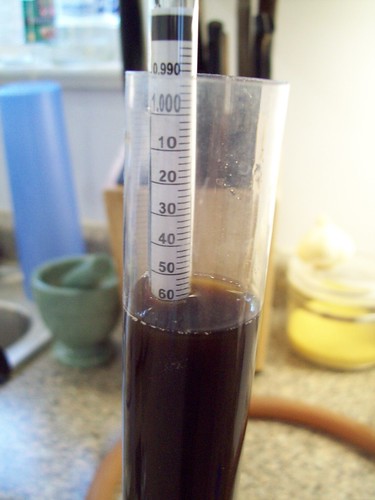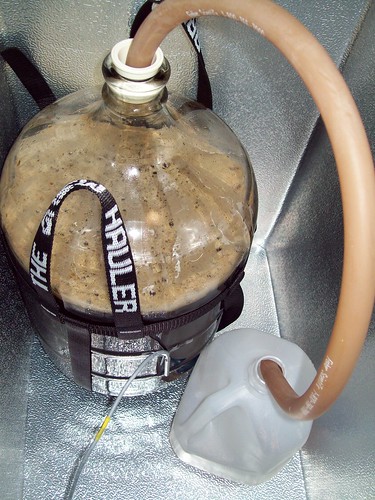After a brief year and a half long hiatus from brewing, I have decided to get back on the horse (or did I fall off the wagon?).
Why a year and a half? Well, I lived in Seattle for a year and I found it hard to justify brewing in a city with such a high brewery per capita. Why should I expend all that effort when I can walk a few blocks and get something much, much better? I moved to Austin six months ago and have just been getting settled in since then, I guess.
Although Austin exceeded my beer expectations, I realized that I miss that creative process and the gratification you get from producing something all by yourself. It's the same reason people make their own bread, or yogurt, or stock, or ice cream--it's just more fun, ok?
The first obstacle (in my mind, anyway) to homebrewing in Austin was the temperature. I moved down here during an extremely hot summer. It broke records. I instantly started sweating profusely every time I went outside. There was no way in hell I was going to be able to brew when the ambient temperature in my house is 80F. Forget it. Of course, I could brew only when it was cool enough, but that's only 3 or 4 months out of the year, which is no fun.
So after amassing some funds (largely thanks to Christmas and working some overtime), I purchased a 7 cubic feet freezer. Yes, I realize the irony of purchasing a freezer in January. Yes, it probably isn't necessary right now, but when it warms up (probably in just a few weeks) I'll be glad I got it.
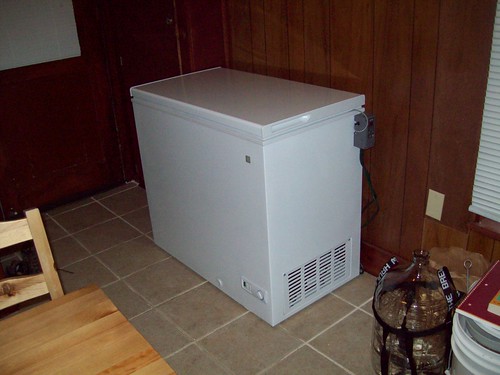
7 cubic feet of awesome. You can see the temperature controller mounted on the side.
So of course, in order to keep the freezer from being a true freezer, I need a
temperature controller, which I found at my local brew shop,
Austin Homebrew Supply (AHS).

Makes the engineer in me go "mmm...".
I have it mounted with one of those sticky strips that is used for those plastic 3M hooks you can stick to your wall. Yes, ingenious, I know. It is currently set to keep the
freezer cooler in the 62F to 66F range. I can easily set it for lagering temperatures as well, if I ever have a mind to do such a thing.
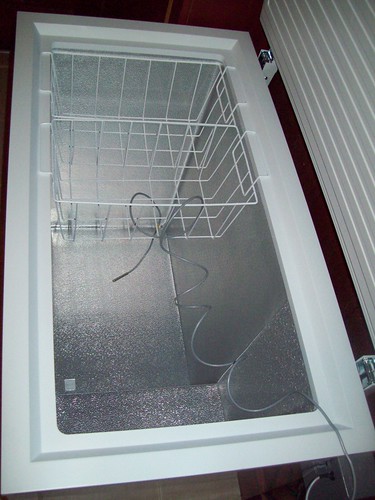
The interior. I am using the baskets to keep the temperature probe near the center of volume.
When shopping around for a freezer I knew I wanted something that I could put both my carboy and bottles in at the same time. Like I mentioned before, ambient temperature in the summer time is too warm to keep beer. Thus, I'd like to be able to store beer at gentler temperature and still have room to brew.
I found a 5 cubic feet model that was close to what I wanted, but after crunching the numbers, it just wouldn't be big enough. So I sprung for the 7 cubic feet model, which actually was not that much more expensive. I ordered it on Monday and it got delivered today.
And since the freezer got here today that means that
tomorrow is brew day!Since my previous
oatmeal coffee stout was a hit, I decided that my first beer after my hiatus would be just that.
I was planning on using the same recipe, but after browsing AHS' website and seeing that their
oatmeal stout kit got rave reviews, I figured I would just get that kit and amend it with coffee at bottling time. (After I got the kit and saw what was in it, I realized it isn't all that different from what I originally did anyway.)
So I drove literally 5 minutes to AHS, picked up the kit, the temperature control, and a pretty nifty carboy carrying harness.

No more freaking out because the carboy is really heavy and my hands are slipping on the glass!
AHS is completely awesome. They have a very wide selection of everything and they have a ridiculous number of recipes on hand, including an astounding amount for replicating commercial beers. (They have a recipe for Sand Creek's Oscar's Chocolate Oatmeal Stout! Glee!) The best part is that you tell them which recipe you want, whether you want extract, mini-mash, or all-grain, and they go in the back and put it together for you in a matter of minutes. So you don't need to worry about how long a certain kit has been on the shelf; they always make them to order.
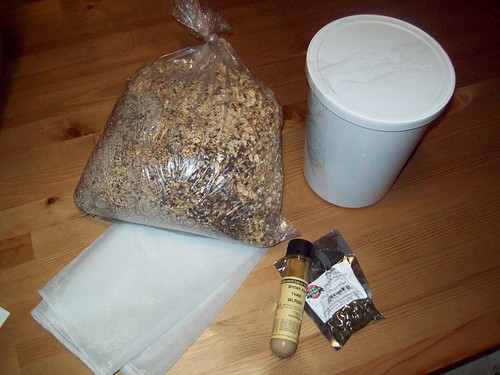
Let's do eeeet.
Unfortunately, I forgot to tell them to keep the oatmeal separate, so it looks like I won't get to toast it this time around. I guess I could try to separate it out... hmm... no. I'm sure it will taste just dandy anyway.
Next: Brew day!
